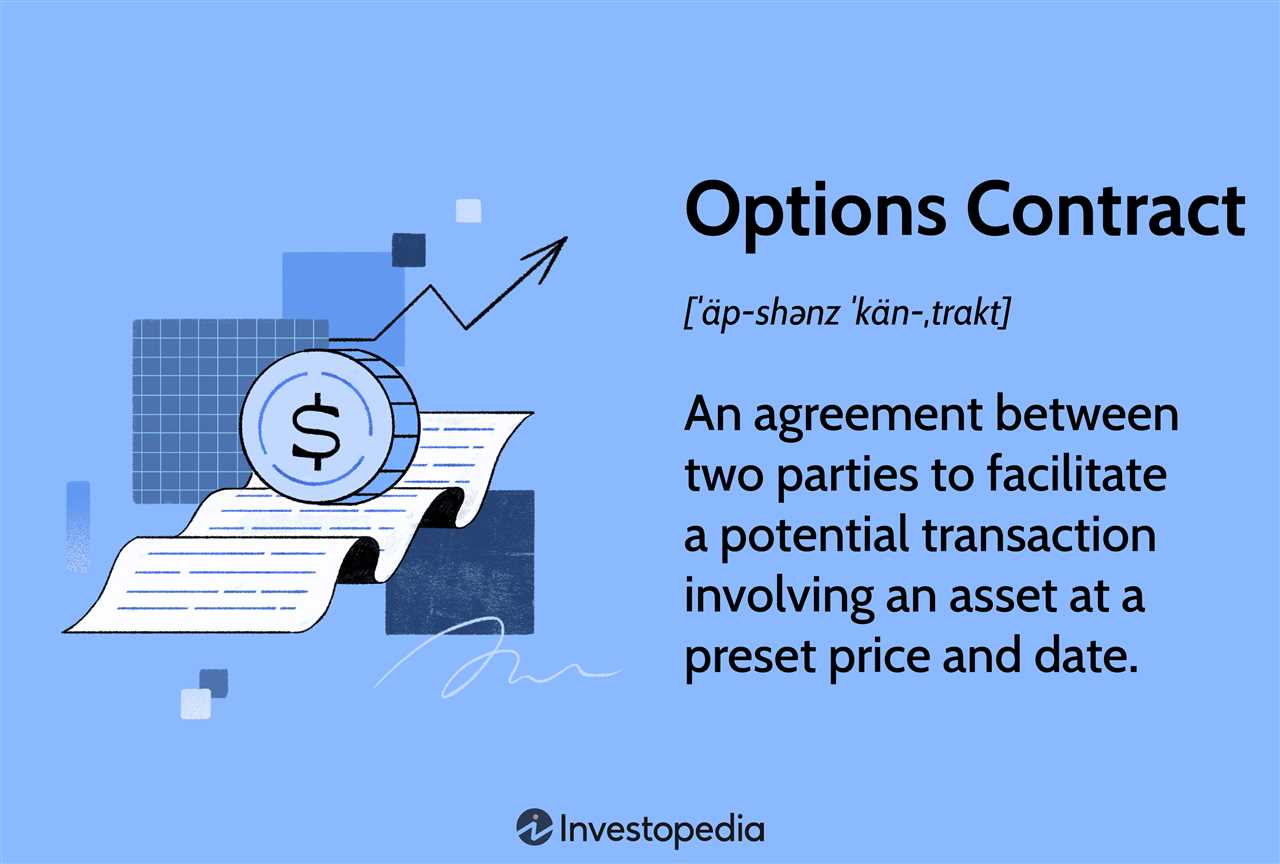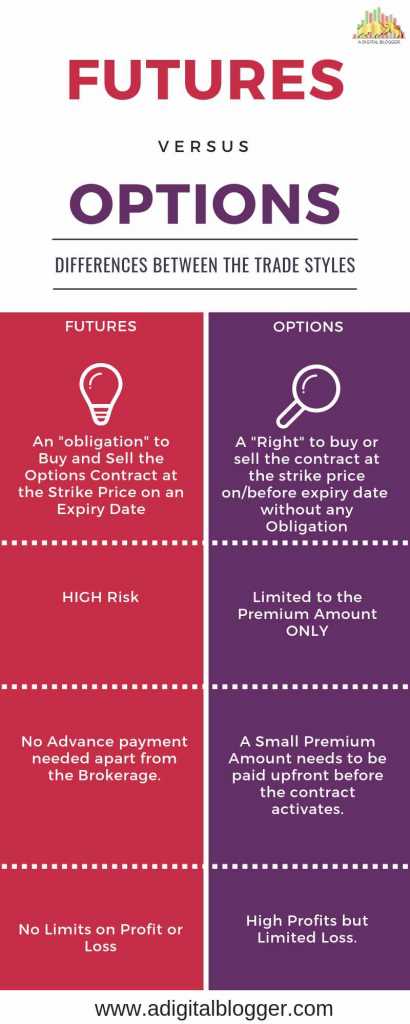What are Options on Futures?

Options on futures provide traders and investors with the opportunity to profit from price movements in various underlying assets, including commodities, currencies, interest rates, and stock market indices. They are commonly used for hedging, speculation, and income generation.
Unlike futures contracts, which require the parties to fulfill the contractual obligation, options on futures give the holder the choice to exercise the option or let it expire. This flexibility allows traders to manage risk and take advantage of market opportunities.
There are two types of options on futures: call options and put options. A call option gives the holder the right to buy a futures contract, while a put option gives the holder the right to sell a futures contract. Traders can buy options to profit from price increases (long position) or sell options to profit from price decreases (short position).
Options on futures have several key components, including the underlying futures contract, the strike price, the expiration date, and the premium. The premium is the price paid for the option and represents the potential profit or loss. The expiration date is the last day on which the option can be exercised, and the strike price determines the price at which the underlying futures contract can be bought or sold.
Overall, options on futures are versatile financial instruments that offer traders and investors the opportunity to profit from price movements in various markets. They provide flexibility, risk management, and potential returns, making them a popular choice among market participants.
Options on futures are financial derivatives that give the holder the right, but not the obligation, to buy or sell a futures contract at a specific price (strike price) on or before a certain date (expiration date). These options are traded on exchanges, just like futures contracts.
There are two types of options on futures: call options and put options. A call option gives the holder the right to buy a futures contract, while a put option gives the holder the right to sell a futures contract.
Options on futures have several key components:
- Underlying Futures Contract: The futures contract on which the option is based. It represents the asset or commodity that the option gives the right to buy or sell.
- Strike Price: The price at which the option holder can buy or sell the underlying futures contract.
- Expiration Date: The date on which the option expires and becomes worthless if not exercised.
- Premium: The price paid by the option buyer to the option seller for the right to buy or sell the underlying futures contract.
Traders can use options on futures to hedge their positions in the underlying futures contract. For example, a farmer who grows corn can buy put options on corn futures to protect against a decrease in corn prices. If the price of corn falls, the put options will increase in value, offsetting the losses in the corn futures position.
Options on futures can also be used for speculation. Traders can buy call options on a futures contract if they believe the price of the underlying asset will increase. If their prediction is correct, they can sell the options at a profit. Conversely, traders can buy put options if they believe the price of the underlying asset will decrease.
How do Options on Futures Work?
Options on futures can be either call options or put options. A call option gives the holder the right to buy a futures contract, while a put option gives the holder the right to sell a futures contract. The strike price determines the price at which the futures contract can be bought or sold if the option is exercised.
One key feature of options on futures is that they have an expiration date. This means that the option must be exercised or it will expire worthless. The expiration date is an important factor to consider when trading options, as it determines the time frame within which the option can be exercised.
Options on futures also have different styles of exercise. American-style options can be exercised at any time before the expiration date, while European-style options can only be exercised on the expiration date itself. The exercise style can affect the trading strategy and decision-making process of options traders.
Options on futures provide traders and investors with a range of strategies and opportunities. They can be used for hedging purposes, allowing market participants to protect their positions against adverse price movements. Additionally, options on futures can be used for speculating on price movements, providing traders with leverage and the potential for significant returns.
Practical Examples of Options on Futures
Options on futures provide traders and investors with a wide range of opportunities to manage risk and speculate on price movements in various markets. Let’s explore some practical examples of how options on futures can be used.
Example 1: Hedging Agricultural Commodities
Imagine you are a farmer who grows corn. You are concerned about a potential drop in corn prices before the harvest season. To protect yourself from this risk, you can buy put options on corn futures. A put option gives you the right, but not the obligation, to sell corn futures at a predetermined price (strike price) on or before a specific date (expiration date).
If corn prices indeed drop, the value of your put options will increase, offsetting the losses on your physical corn crop. On the other hand, if corn prices rise, you can simply let the options expire and sell your physical corn at the higher market price.
Example 2: Speculating on Energy Prices
Let’s say you have a bullish view on the price of crude oil and believe it will rise in the coming months. Instead of buying physical barrels of oil, which can be costly and cumbersome, you can buy call options on crude oil futures.
A call option gives you the right, but not the obligation, to buy crude oil futures at a predetermined price (strike price) on or before a specific date (expiration date). If the price of crude oil indeed rises, the value of your call options will increase, allowing you to profit from the price movement without actually owning the physical commodity.
On the other hand, if the price of crude oil falls or remains stagnant, you can simply let the options expire and limit your losses to the premium paid for the options.
These are just two examples of how options on futures can be used in real-world scenarios. Whether you are a hedger looking to protect against price fluctuations or a speculator seeking to profit from market movements, options on futures provide a versatile tool to achieve your financial goals.
Example 1: Hedging Agricultural Commodities

One practical example of using options on futures is hedging agricultural commodities. Farmers and producers of agricultural products often face the risk of price fluctuations in their products, which can significantly impact their profitability. Options on futures provide a way for these individuals to protect themselves against adverse price movements.
Let’s consider a hypothetical scenario where a farmer is growing corn and expects to harvest a certain amount of corn in the future. However, the farmer is concerned about the possibility of a decline in corn prices, which would negatively affect their profits. To hedge against this risk, the farmer can use options on corn futures.
The farmer can buy put options on corn futures, which give them the right to sell corn futures at a predetermined price (the strike price) within a specified period of time (the expiration date). If the price of corn futures decreases below the strike price, the farmer can exercise the put options and sell their corn futures at the higher strike price, effectively locking in a higher selling price for their corn.
By using put options on corn futures, the farmer is able to mitigate the risk of falling corn prices. Even if the price of corn futures decreases, the farmer can still sell their corn at the higher strike price, thus protecting their profits. However, if the price of corn futures increases, the farmer can simply let the put options expire and sell their corn at the higher market price.
This example illustrates how options on futures can be used as a risk management tool in the agricultural industry. By hedging their exposure to price fluctuations, farmers and producers can protect their profits and ensure a more stable financial position.
Example 2: Speculating on Energy Prices

Options on futures can also be used for speculative purposes, allowing traders to profit from anticipated changes in energy prices. This example will demonstrate how options on futures can be used to speculate on energy prices.
When speculating on energy prices using options on futures, traders can take either a bullish or bearish position. A bullish position involves buying call options, which give the holder the right to buy the underlying futures contract at the strike price. A bearish position involves buying put options, which give the holder the right to sell the underlying futures contract at the strike price.
How do Options on Futures Work?
Let’s say a trader believes that the price of crude oil will increase in the next month. They can buy call options on crude oil futures contracts, with a strike price slightly higher than the current market price. If the price of crude oil rises above the strike price before the expiration date, the trader can exercise the options and buy the futures contracts at the lower strike price, profiting from the price difference.
On the other hand, if the trader believes that the price of crude oil will decrease, they can buy put options on crude oil futures contracts. If the price of crude oil falls below the strike price before the expiration date, the trader can exercise the options and sell the futures contracts at the higher strike price, again profiting from the price difference.
Practical Example
Let’s say a trader buys call options on crude oil futures contracts with a strike price of $60 per barrel. The current market price of crude oil is $55 per barrel. If the price of crude oil rises to $65 per barrel before the expiration date, the trader can exercise the options and buy the futures contracts at $60 per barrel, making a profit of $5 per barrel.
On the other hand, if the trader buys put options on crude oil futures contracts with a strike price of $60 per barrel and the price of crude oil falls to $55 per barrel before the expiration date, the trader can exercise the options and sell the futures contracts at $60 per barrel, again making a profit of $5 per barrel.
| Advantages | Disadvantages |
|---|---|
| Allows traders to profit from anticipated changes in energy prices | Options on futures involve risk and should only be used by experienced traders |
| Provides flexibility in taking bullish or bearish positions | |
| Can be used as a hedging tool | Options on futures may expire worthless if the anticipated price change does not occur |

Emily Bibb simplifies finance through bestselling books and articles, bridging complex concepts for everyday understanding. Engaging audiences via social media, she shares insights for financial success. Active in seminars and philanthropy, Bibb aims to create a more financially informed society, driven by her passion for empowering others.
